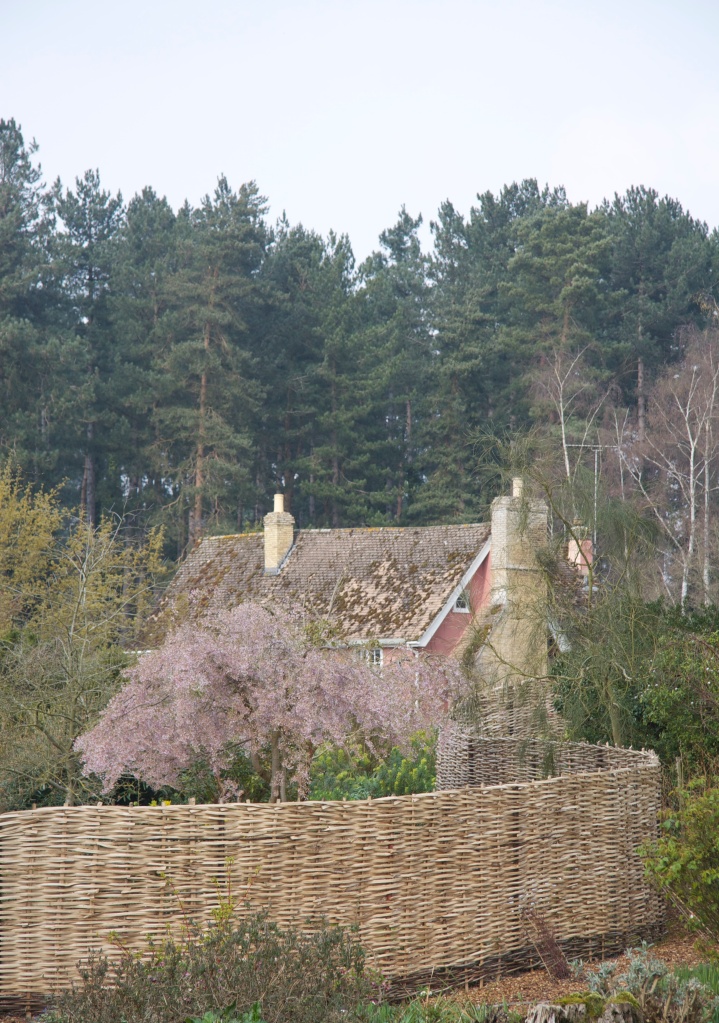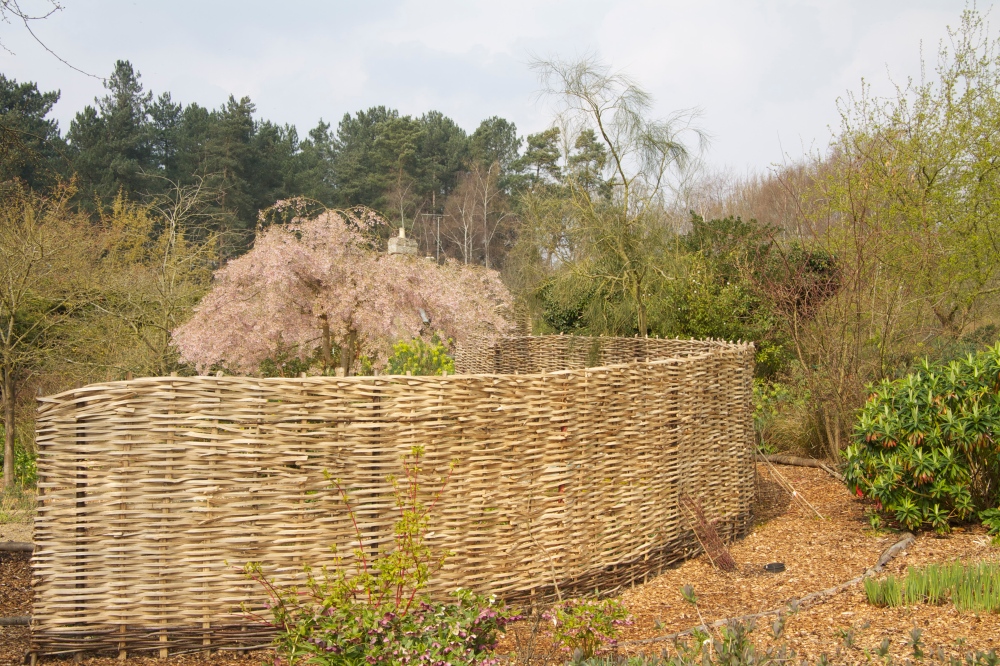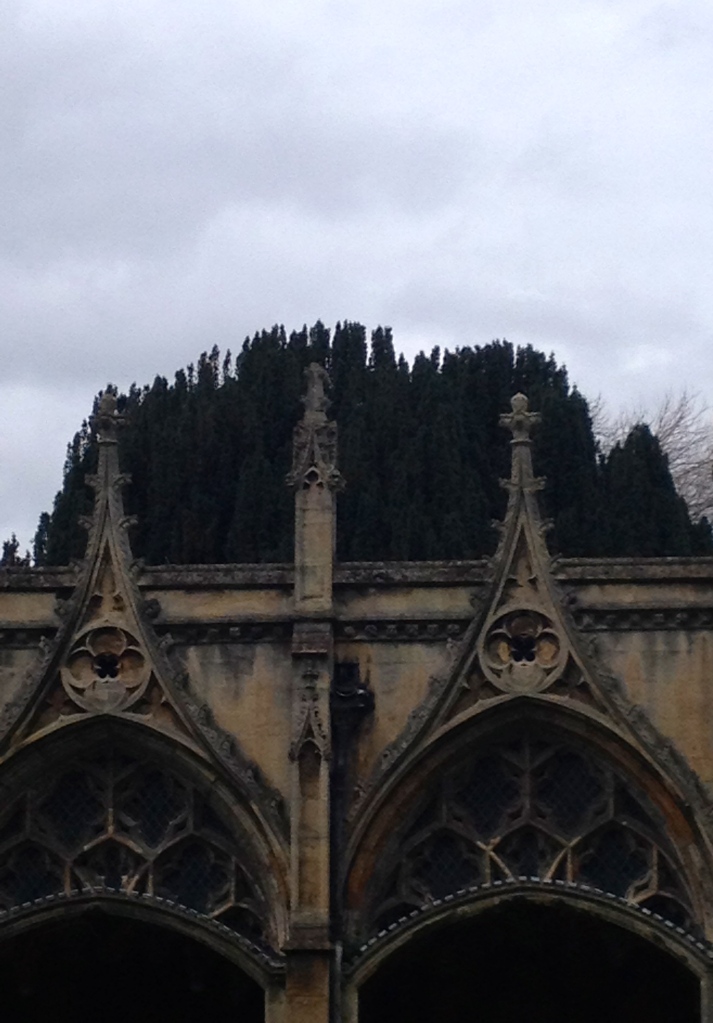INSPIRING ARCHITECTURAL USE OF COPPICED WOOD FROM BEIJING TO SUFFOLK
 Liyuan Library near Beijing by Li Xiaodong – Photograph courtesy of Dezeen
Liyuan Library near Beijing by Li Xiaodong – Photograph courtesy of Dezeen
There is just a week left of the wonderful ‘Sensing Spaces, Architecture Re-imagined’ exhibition at the Royal Academy in London. It is an uplifting, sensuous exhibition, featuring work by seven architectural practices from four different contintents. It does exactly what it sets out to do – delights and surprises the visitor and makes us think about thoughtful and innovative architecture in a way that feels personal and relevant to us.
My absolute favourite installation is by Chinese architect, Li Xiaodong – it is a darkened, straight-sided maze built of elegant panels constructed from immaculately ranked coppiced hazel and it is tantalisingly lit by an illuminated white path.
For Owen Wainwright in The Guardian being in the space ‘feels like walking in a forest in the snow at night’. For me, one of the great pleasures of being in this magical wooded world is to stand still and watch the delight on visitors’ faces as they set off on an adventure to explore and find their way to the mirrored zen garden at the centre:
The hazel structures are very simple and very beautiful – the subtle, constantly varying, palette of silvered skins is central to their charm:
And the moon-like lighting leaks through the gaps in the screens to create fine shadows:
It was uplifting to discover that Li Xiaodong has already incorporated these fine natural screens into his brilliant design of the Liyuan Library near the small village of Huairou about two hours drive from Beijing:
Photo of Liyuan Library by Li Xiaodong courtesy of Dezeen
Here, the site for the library was deliberately chosen at the foot of the mountains, a five minute walk out of the village. The idea is that the conscious effort to head for the reading room amongst this beautiful, rugged landscape helps clear thoughts.
The building itself is made of glass and the hazel cladding was inspired by piles of locally sourced wooden sticks for firewood collected in piles outside the villagers’ houses:
 Photo by Li Xiaodong courtesy of Dezeen
Photo by Li Xiaodong courtesy of Dezeen
Inside the library openings frame the view beyond and ‘the wooden sticks temper the bright light and spread it evenly through the space to provide for a perfect reading ambience’ (Li Xioadong). I long to visit it.
Phto by Li Xiaodong courtesy of Dezeen
Back in the UK, I feel inspired to try at least to use coppiced wood in a more innovative, elegant way for gates, screening and garden buildings.
I touched on Patrice Taravella’s fantastically creative examples of working with coppiced chestnut in my December 2013 blog on The Prieuré D’Orsan in central France and in my feature on the garden in February edition of Gardens Illustrated.
Here coppiced wood is used everywhere but always in a disciplined way – my horror is of the the Hobbit Movie ‘rustic’ use of coppiced wood to make supposedly charming curvy garden features which generally looked mismatched with everything else in the space.
Simple gates with hinges and handles made of recycled iron give this potentially very formal garden a soft, welcoming feel:
The gates vary gently throughout the garden and are designed to fit perfectly in each location:

 Coppiced chestnut is also used to build structures to give a romantic height and dreaminess to structural planting:
Coppiced chestnut is also used to build structures to give a romantic height and dreaminess to structural planting:
And to build garden rooms which look spare and basic in winter:
But lush and cool in the summer:
Arches and screens are ideas that could well be applied to a smaller garden:
There are fantastic and highly skilled craftspeople to look to, all over the UK. www.coppice-products.co.uk is a great place to start to find someone in your area who could perhaps make make an a tunnel like this for a kitchen garden:
or go for it and create something more monumental – I love this broad tunnel at WInterbourne Botanic Garden, Birmingham:
Even simple wigwams as plant supports can be beautiful and strong if kept simple and unfussy:
These plant supports are from Natural Fencing who already make a wide range of garden structures to commission.
Now in the swing of looking at structures made from coppiced wood with fresh eyes, I was struck by the new and very beautiful hurdle fence at Fullers Mill Garden in Suffolk which I visited this week. The garden will open again on April 2nd.
This blonde, curving fence as beautiful as the wonderful old brick crinkle crankle walls in Suffolk villages such as Easton:
 The fence was built in situ by master hurdle maker, David Downie Close up it has the same gorgeous subtlety of colour as the work of Li Xiaodong at the Royal Academy:
The fence was built in situ by master hurdle maker, David Downie Close up it has the same gorgeous subtlety of colour as the work of Li Xiaodong at the Royal Academy:
 It sits easily and comfortably in the naturally flowing context this wonderful plantsman’s garden in the middle of the King’s Forest and should last for about twenty years.
It sits easily and comfortably in the naturally flowing context this wonderful plantsman’s garden in the middle of the King’s Forest and should last for about twenty years.
































